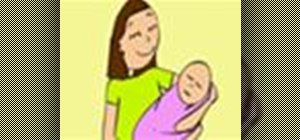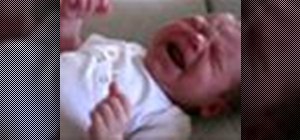It's not unusual to feel a little down after giving birth. You've been through a major life event, and your mind and body are recovering. Postpartum depression is more serious than the typical "baby blues" that can occur after childbirth. Learn how to identify this condition so you can treat it and spend more time enjoying your baby.
You Will Need
*Knowledge of the symptoms
*Medical attention
Step 1: Notice prolonged disturbing feelings
Take note of constant feelings of sadness, shame, inadequacy, or emptiness that continue past the first two weeks after childbirth.
Step 2: Check for loss of appetite
Look for loss in appetite or a drastic change in weight.
Step 3: Examine lack of motivation
Think about whether you lack energy or motivation, or have difficulty completing tasks.
Tip: This condition often results in a loss of pleasure in anything about your daily life.
Step 4: Look for problems bonding
Watch for signs that you may be having difficulty bonding with your baby, family, or friends.
Step 5: Be aware of harmful thoughts
Be aware of thoughts about harming yourself or your baby.
Step 6: Understand the condition
Understand that postpartum depression does not mean you're a bad mom and know that there is help available. If any of these symptoms are present, talk to your doctor immediately.
Fact: After childbirth, 50 to 80 percent of women experience "baby blues," a temporary depression that usually goes away within 10 days.
Just updated your iPhone? You'll find new emoji, enhanced security, podcast transcripts, Apple Cash virtual numbers, and other useful features. There are even new additions hidden within Safari. Find out what's new and changed on your iPhone with the iOS 17.4 update.


































Be the First to Comment
Share Your Thoughts